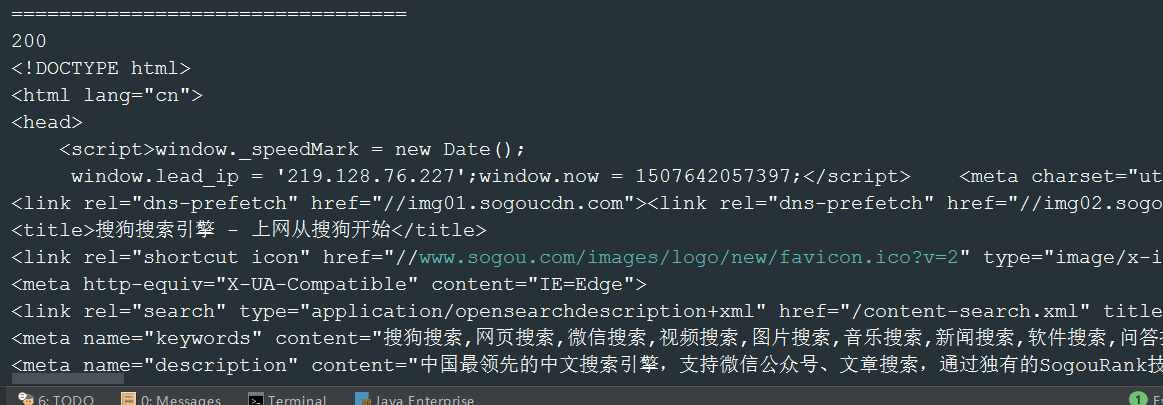新引入Hutool-HttpUtil的使用(更简单,更强大!),详见:http://www.cnblogs.com/jiangbei/p/7667858.html
一、概述
1.简介
根据凡技术必登其官网的原则(如果有),我们可以先访问其官网:http://hc.apache.org/httpcomponents-client-4.5.x/index.html
摘取的简介如下:

谷歌翻译如下:
关于更加详细的本地化的介绍,可以参见网友的博客:http://blog.csdn.net/wangpeng047/article/details/19624529/
简单的来说,可以在Java代码中使用httpClient来调用服务(HTTP协议),类似之前在Ajax中发送请求类似
2.相关教程
可以参考官网给出的教程:http://hc.apache.org/httpcomponents-client-4.5.x/tutorial/html/index.html
二、入门
1.下载
这里采用的是maven进行构建,引入的依赖如下:
<dependency><groupId>org.apache.httpcomponents</groupId><artifactId>httpclient</artifactId><version>4.5.3</version>
</dependency>
当然,如果使用其它获取方式(jar或者gradle等),可以参见官网相关介绍:
http://hc.apache.org/httpcomponents-client-4.5.x/httpclient/dependency-info.html
2.起步
这里参考上文随笔处的步骤与写法,当然,对于官网有quick start的,还是有必要进行阅读的:
http://hc.apache.org/httpcomponents-client-4.5.x/quickstart.html
使用HttpClient发送请求、接收响应很简单,一般需要如下几步即可。
1. 创建HttpClient对象。
2. 创建请求方法的实例,并指定请求URL。如果需要发送GET请求,创建HttpGet对象;如果需要发送POST请求,创建HttpPost对象。
3. 如果需要发送请求参数,可调用HttpGet、HttpPost共同的setParams(HetpParams params)方法来添加请求参数;对于HttpPost对象而言,也可调用setEntity(HttpEntity entity)方法来设置请求参数。
4. 调用HttpClient对象的execute(HttpUriRequest request)发送请求,该方法返回一个HttpResponse。
5. 调用HttpResponse的getAllHeaders()、getHeaders(String name)等方法可获取服务器的响应头;调用HttpResponse的getEntity()方法可获取HttpEntity对象,该对象包装了服务器的响应内容。程序可通过该对象获取服务器的响应内容。
6. 释放连接。无论执行方法是否成功,都必须释放连接
1.发送无参GET请求
public static void main(String[] args) {// 创建httpClientCloseableHttpClient httpClient = HttpClients.createDefault();try {// 创建httpGet(请使用http://)HttpGet httpGet = new HttpGet("http://www.sogou.com");// 执行请求CloseableHttpResponse response = httpClient.execute(httpGet);try {// 处理响应HttpEntity entity = response.getEntity();// 响应状态码System.out.println("=================================");System.out.println(response.getStatusLine().getStatusCode());// 打印响应体(使用工具类)
System.out.println(EntityUtils.toString(entity));System.out.println("=================================");} finally { // 关闭response
response.close();}} catch (Exception e) {e.printStackTrace();} finally { // 关闭httpClienttry {httpClient.close();} catch (IOException e) {e.printStackTrace();}}} 结果:

// 如果网页内容乱码,可以在toStrng位置加上编码参数
2.发送带参数的GET请求(通过HttpGet的URI参数的构造器)
public static void main(String[] args) {// 创建httpClientCloseableHttpClient httpClient = HttpClients.createDefault();try {// 创建URIBuilderURIBuilder uriBuilder = new URIBuilder("http://www.sogou.com");// 设置参数uriBuilder.addParameter("query", "more love");// 使用URIBuilder创建httpGetHttpGet httpGet = new HttpGet(uriBuilder.build());// 执行请求CloseableHttpResponse response = httpClient.execute(httpGet);try {// 处理响应HttpEntity entity = response.getEntity();// 响应状态码System.out.println("=================================");System.out.println(response.getStatusLine().getStatusCode());// 打印响应体(使用工具类)// System.out.println(EntityUtils.toString(entity));System.out.println("=================================");} finally { // 关闭response
response.close();}} catch (Exception e) {e.printStackTrace();} finally { // 关闭httpClienttry {httpClient.close();} catch (IOException e) {e.printStackTrace();}}} // 核心就是URIBuilder对URI的创建,响应处理不变
3.发送POST请求
public static void main(String[] args) {// 创建httpClientCloseableHttpClient httpClient = HttpClients.createDefault();try {HttpPost httpPost = new HttpPost("http://post_uri");List<NameValuePair> nvps = new ArrayList<>();nvps.add(new BasicNameValuePair("username", "vip"));nvps.add(new BasicNameValuePair("password", "secret"));// 同样可以指定参数的编码httpPost.setEntity(new UrlEncodedFormEntity(nvps, "UTF-8"));// 执行请求CloseableHttpResponse response = httpClient.execute(httpPost);try {// 处理响应HttpEntity entity = response.getEntity();// 响应状态码System.out.println("=================================");System.out.println(response.getStatusLine().getStatusCode());// 打印响应体(使用工具类)// System.out.println(EntityUtils.toString(entity));System.out.println("=================================");} finally { // 关闭response
response.close();}} catch (Exception e) {e.printStackTrace();} finally { // 关闭httpClienttry {httpClient.close();} catch (IOException e) {e.printStackTrace();}}}




)






——document节点属性)







